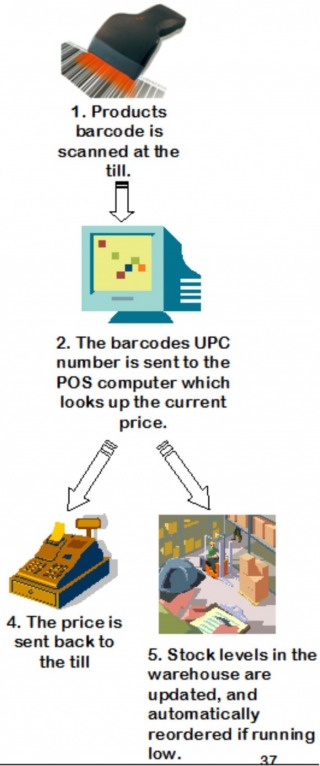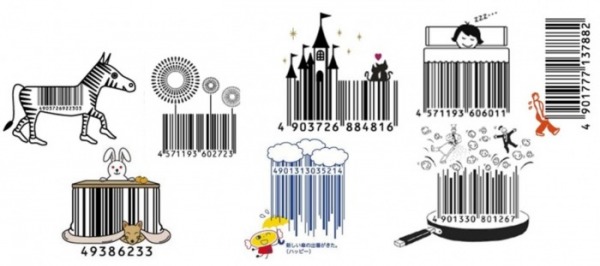BARCODE

· These are always found on packaged which are intended for retail sale (to sell in a shop).
· They are found on virtually everything as they are cheap to print by incorporating them into a packaging's design, or by printing them onto a sticker.
· They are made up of different thickness, vertical bars, which represent the UPC number (Universal Product Code), of the item.
· When they are scanned at the checkout, the till automatically sends this information to the POS (Point of Sale) computer, which can recognise that UPC is for example a bottle of Coke. The Computer sends the current price back to the till.
ADVANTAGES of THE POS/UPC SYSTEM
Used worldwide as the UPC is unique to that product
Cheap to put on products
Shops can use the system to work out stock levels (how many have been sold) and therefore know when to re-order.
Quickly & easily read at the checkout
Can change the prices in store easily on the POS computer, for example for promotions and sales (If price information was held in the barcode, this would be impossible!)
HOW DOES THE POS SYSTEM WORK?
BARCODE DESIGN TASK
· Barcodes are often redesigned by Graphic Designers to reflect the theme of the product.
· Only a very small strip is actually used to scan, and so as long as a portion remains intact to enable the scanner to read, the rest is up to your imagination.
Here are some existing examples:
TASK

Using the standard barcode given (right), you are to design a range of barcodes to reflect the following themes.



